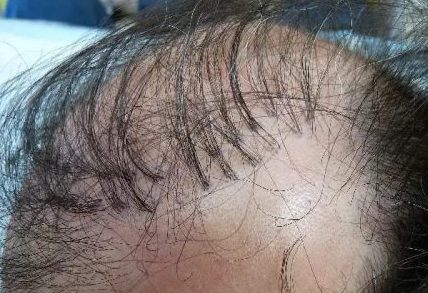Hair Plugs History – Why They are Not Used Anymore
Members of the public that do not know much about hair transplants in general, or specific modern hair restoration methods such as Follicular Unit Extraction (FUE), often use the phrase “hair plugs” when discussing a hair restoration procedure. The use of hair plugs started in the 1950s and continued until late in the 20th century/early in the 21st century. During a hair plug procedure, the surgeon would “punch out” round areas of skin and hair from the donor area and transplant them into the balding area of the scalp. Want to know more about hair plugs and why they are not used anymore? If so, take a look at our hair plug history below!
Hair Plugs History and Modern Day Hair Transplants
 The first thing to know about hair plugs is that they are no longer used by hair transplant surgeons. In the place of hair plugs, surgeons now perform Follicular Unit Extraction (FUE) or Follicular Unit Transplantation (FUT). Even with the rise in popularity of FUE and FUT, some people still use the phrase to describe modern day hair restoration techniques.
The first thing to know about hair plugs is that they are no longer used by hair transplant surgeons. In the place of hair plugs, surgeons now perform Follicular Unit Extraction (FUE) or Follicular Unit Transplantation (FUT). Even with the rise in popularity of FUE and FUT, some people still use the phrase to describe modern day hair restoration techniques.
Hair plugs were first performed by Dr. Norman Orentreich, a New York dermatologist, in the 1950s. The “hair plugs” used by surgeons were made of round sections of hair follicles and skin and the plugs were about 4-millimeters in size. Even with the ability of the plugs to be inserted into the balding areas of the scalp, the results were rather unnatural in appearance and even had a “doll-like” quality.
As the years passed, and the technology used to perform hair transplants evolved and became more sophisticated, hair plugs became less popular and were replaced by newer techniques like FUT and FUE. The advantages of these newer hair transplant techniques included results that were more natural in appearance, quicker overall surgery time and reduced chances of scarring.
FUE and Hair Plugs Differences
FUE hair transplant is performed by removing individual hair follicles from the donor area of the scalp (as opposed to the strip of skin that is removed during FUT). If the patient does not have enough high-quality donor hair available on the back of the scalp, donor hair can be taken from other parts of the body including the beard and the chest.
FUE offers multiple advantages over hair plugs and they include a reduced chance of scarring, faster recovery time and a natural appearance to the final results.
Hair Plugs Risks
While it is important to note that hair plugs were cutting-edge and a revolutionary procedure at the time of their creation, their use has been eliminated thanks to updated hair transplant techniques.
When hair plugs were used on a regular basis, there were multiple risks that included:
- Unnatural appearance of results
- Scarring
- Swelling
- Infection
- Bleeding
- Numbness in the scalp where the hair grafts were removed and implanted
- Lingering pain
- Ingrown hairs
Hair Plugs Patients – Can they Undergo a Modern Hair Transplant?
Patients that had hair plugs transplanted into the balding areas of their scalp in the past are still candidates for a modern hair transplant.
It is important for patients to share past hair transplant procedures with their doctor of choice along with their medical history (including any current medications they take on a regular basis).
Realistic expectations are also an important part of the hair transplant process as patients need to know the type of results they can expect to see. The setting of realistic expectations is a vital part of undergoing a hair transplant so patients will not be surprised or disappointed by their new hairline.
Patients that had hair plugs in the past are still viable candidates for FUE hair transplant as long as they have enough high-quality donor hair on the body to transplant to the scalp. Board-certified and experienced hair transplant surgeons across the country perform hair plug revisions on patients of all ages that are not happy with the “pluggy” appearance of their hair.
FUE Hair Transplant Consultation Appointment
Patients that are interested in undergoing a hair transplant have a number of options depending on their current amount of hair loss, their desired final results and the amount of quality donor hair they have available for the procedure.
Once the hair grafts are implanted into the scalp, the patient will experience some stubble along with some scabbing in the transplanted area. The transplanted hair will start to fall out after a few weeks once the hair enters the resting phase. Patients do not need to worry about this hair loss as the hair follicles will enter another growth phase and begin to grow as small hair that eventually becomes long, thick, mature hair. In addition, the hair that is transplanted into the scalp is not subject to the same biological impulses that result in baldness. The hair that is transplanted will produce natural hair just as it did in the donor area where the hair grafts were gathered for transplantation.
– MA
